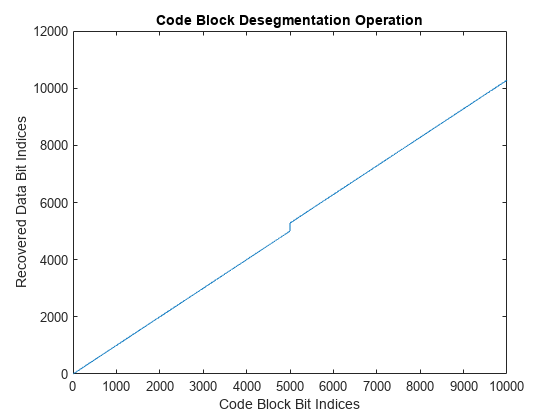nrCodeBlockDesegmentLDPC
LDPC code block desegmentation and CRC decoding
Description
[
concatenates the input code block segments blk,err] = nrCodeBlockDesegmentLDPC(cbs,bgn,blklen)cbs into a single output
data block blk of length blklen. The function
validates the data dimensions of the input cbs based on the specified
base graph number bgn and output block length
blklen. The function removes any filler bits and type-24B cyclic
redundancy check (CRC) bits present in the input cbs. The output
err is the result of the type-24B CRC decoding (if applicable). This
process is the inverse of the low-density parity-check (LDPC) code block segmentation
specified in TS 38.212 Section 5.2.2 [1] and implemented in nrCodeBlockSegmentLDPC.
Examples
Input Arguments
Output Arguments
References
[1] 3GPP TS 38.212. “NR; Multiplexing and channel coding.” 3rd Generation Partnership Project; Technical Specification Group Radio Access Network.
